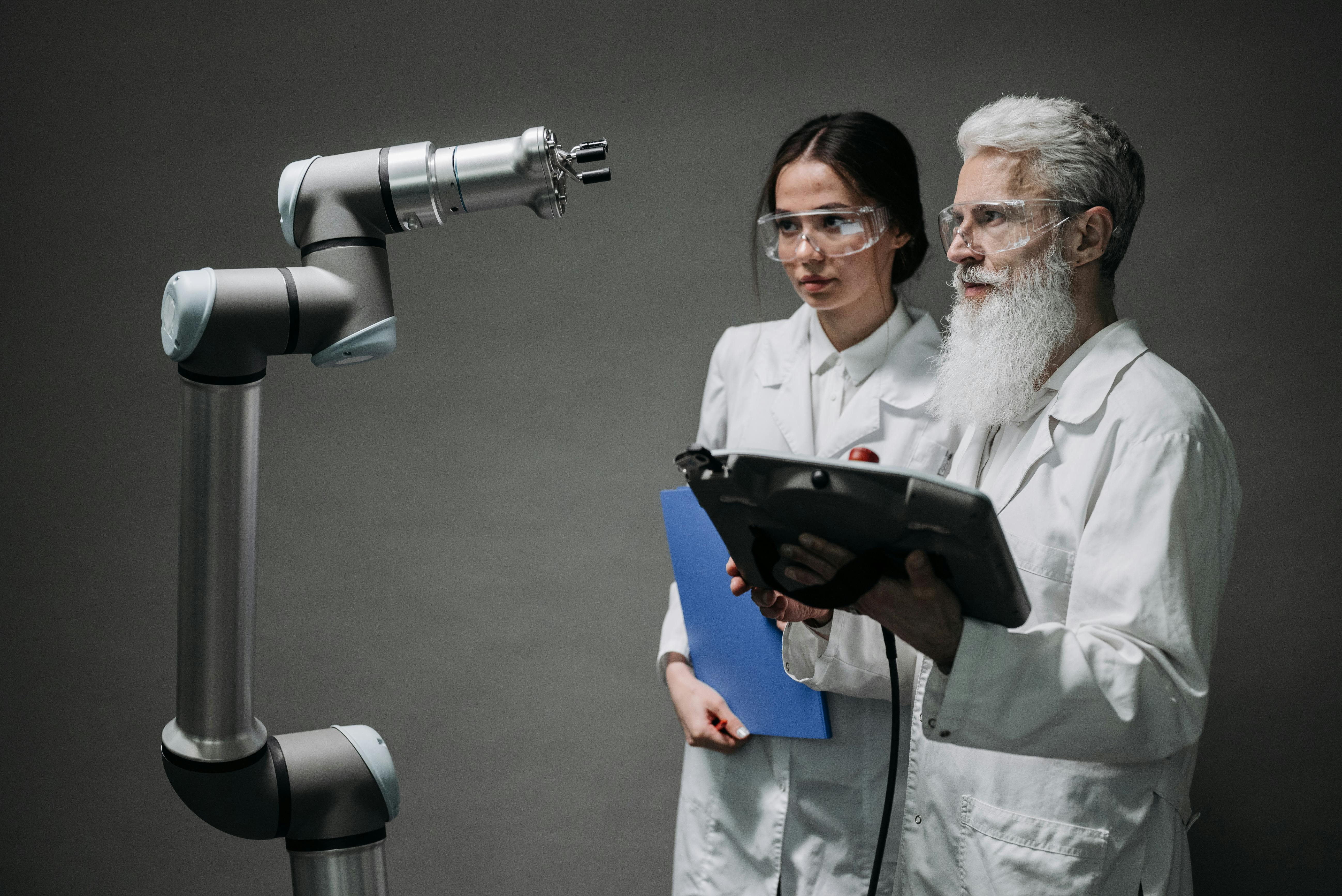
OpenAI’s Strategic Resurgence
In the rapidly evolving and highly competitive landscape of AI development, OpenAI has strategically positioned itself as a key beneficiary of recent talent shifts. The organization has been actively reinforcing its capabilities and market position through the acquisition of researchers departing from rival organizations, most notably Meta. This deliberate move signifies a tactical advantage gained during a period of intense industry competition, effectively bolstering OpenAI’s expertise in critical areas of AI research and development.
Gaining Strength from Rival Talent. Find out more about AI researchers leaving Meta to OpenAI.
OpenAI has notably welcomed several high-profile researchers who recently departed from Meta. This influx of talent includes individuals like Avi Verma and Ethan Knight, who returned to OpenAI after brief stints at Meta, alongside veteran Meta executive Chaya Nayak. This cohort represents a significant strategic reinforcement for OpenAI. By attracting researchers who possess deep, firsthand insights into the methodologies, ambitions, and strategic priorities of their competitors, OpenAI not only strengthens its own research teams but also potentially gains invaluable intelligence and diverse perspectives that can inform its future direction. This talent acquisition strategy is absolutely crucial in the ongoing AI race. It enables OpenAI to enhance its development of cutting-edge AI models and technologies, keeping it at the forefront of innovation. The ability to draw from the talent pools of major rivals demonstrates OpenAI’s continued attractiveness as a leading research institution. It suggests that factors such as OpenAI’s specific research focus, its leadership vision, or its organizational culture resonate strongly with top AI professionals, making it a preferred destination for those at the pinnacle of the field. This strategic talent scouting is a key component of OpenAI’s competitive playbook.
Strengthening Core AI Development Pillars. Find out more about AI researchers leaving Meta to OpenAI guide.
The researchers who are joining OpenAI are often bringing with them specialized expertise that is directly relevant to the company’s core mission. This includes areas such as advanced large language models, generative AI, and, critically, AI safety and alignment. For instance, Chaya Nayak’s extensive background in leading generative AI efforts and data privacy initiatives at Meta is directly applicable to OpenAI’s ongoing work on foundational models like ChatGPT and its future, more sophisticated iterations. Similarly, the return of researchers such as Avi Verma and Ethan Knight suggests a renewed strategic focus on specific areas where they previously made significant contributions. This strategic bolstering of specific research pillars is vital for maintaining a competitive edge in the AI sector. It allows OpenAI to accelerate its development cycles, explore new and ambitious research avenues with greater confidence, and refine its existing AI systems to be more powerful, efficient, and demonstrably safer. The integration of these seasoned professionals is poised to contribute directly and significantly to the company’s ability to innovate and lead in the rapidly advancing field of artificial intelligence. It’s about building a stronger foundation by bringing in proven talent.
Competitive Dynamics in the AI Arms Race
The movement of talent between major AI players, such as Meta and OpenAI, is a critical indicator of the ongoing, intense competitive dynamics within the industry. When one organization successfully gains key researchers from a direct competitor, it not only enhances its own capabilities but also potentially hinders the rival’s progress. OpenAI’s demonstrated success in attracting these individuals, particularly during a period of internal flux at Meta, suggests a robust and effective competitive strategy. This dynamic highlights the fluid nature of leadership in the AI sector. In this arena, talent acquisition and retention are as crucial, if not more so, than technological breakthroughs themselves. The fact that researchers may choose to return to OpenAI, even when potentially presented with substantial offers from Meta, points to a deeper set of compelling factors. These could include the organization’s established reputation for groundbreaking work, its perceived research freedom, or its mission-driven ethos that resonates with researchers’ desire to contribute to impactful advancements. These strategic talent plays are not minor events; they contribute significantly to the overall AI arms race, fundamentally shaping the competitive landscape and influencing the direction of future AI development across the entire industry. It’s a high-stakes game of chess, played with human capital.
Broader Industry Ramifications. Find out more about AI researchers leaving Meta to OpenAI tips.
The ongoing shifts in AI talent are not isolated incidents confined to a few companies; they carry profound implications that extend far beyond the immediate players involved. These movements are actively reshaping competitive dynamics, influencing critical research trajectories, and potentially fostering entirely new avenues for innovation across the entire artificial intelligence ecosystem. Understanding these broader ramifications is key to grasping the future trajectory of AI.
Implications for Meta’s AI Trajectory. Find out more about AI researchers leaving Meta to OpenAI strategies.
The departures of key researchers present a significant challenge for Meta’s ambitious AI agenda, particularly concerning its high-profile Superintelligence Labs. While the company possesses vast resources and a clearly articulated strategic vision, the loss of specialized expertise, especially individuals who were recruited at great expense, could lead to delays in critical projects or necessitate a fundamental reassessment of its development roadmap. Maintaining momentum in cutting-edge AI research is incredibly demanding. It requires not only substantial financial backing and immense computational power but also, crucially, the consistent presence of a motivated, cohesive, and stable research team. The long-term ability of Meta to retain its top talent will be a critical factor determining its success in achieving its superintelligence objectives. This current situation could very well prompt Meta to undertake a thorough re-evaluation of its internal culture, its recruitment strategies, and its overall approach to fostering researcher autonomy. The goal would be to ensure it can sustain its ambitious goals amidst the fierce and unrelenting competition. Ultimately, the impact on Meta’s trajectory hinges on its capacity to not only attract but also to effectively nurture and retain the specialized minds that are absolutely essential for achieving its ambitious superintelligence objectives. It’s a complex balancing act between grand vision and practical execution.
The Startup Ecosystem’s Advantage. Find out more about AI researchers leaving Meta to OpenAI overview.
The dynamic movement of AI talent also serves to invigorate the broader startup ecosystem. Researchers who depart from large corporations, whether by choice or due to perceived limitations within those organizations, often bring with them a wealth of innovative ideas and the essential entrepreneurial spirit needed to launch new ventures. These startups, unburdened by the legacy systems, extensive oversight, or bureaucratic inertia of larger firms, can be remarkably agile and capable of disrupting established markets. They frequently offer an environment where researchers can pursue novel concepts with a greater degree of freedom and potentially see their innovations brought to market far more rapidly. The constant infusion of talent from tech giants into the startup scene ensures a continuous cycle of innovation, pushing the boundaries of what is possible in AI. This dynamic benefits the broader industry by diversifying approaches to AI development and fostering a healthy competition that can drive overall progress and technological advancement. The so-called “talent exodus” from big tech, therefore, can be seen not just as a loss for the corporations, but as a powerful catalyst for broader industry evolution and decentralized innovation. It’s where disruptive ideas often find their fertile ground.
Redefining Talent Acquisition and Retention in AI
The current market dynamics for AI talent are forcing organizations across the board to fundamentally rethink their approaches to recruitment and retention. It has become increasingly clear that simply offering high salaries, while certainly an important factor, is no longer sufficient to secure and retain top researchers. Factors such as genuine research autonomy, alignment with a compelling and meaningful mission, a positive and collaborative work culture, and tangible opportunities for continuous learning and significant impact are proving to be equally, if not more, critical. Companies are learning, often the hard way, that building a sustainable competitive advantage in AI requires a holistic strategy. This strategy must address the multifaceted needs of their highly specialized workforce. This might involve creating more flexible research structures, fostering a stronger sense of community and belonging among researchers, or ensuring that leadership actively supports, empowers, and champions its research teams. The ongoing “talent wars” are thus driving a necessary and overdue evolution in how the tech industry values, attracts, and retains the intellectual capital that truly powers artificial intelligence innovation. It’s about understanding what truly motivates these brilliant minds.
Conclusion: The Evolving Landscape of AI Innovation. Find out more about Mark Zuckerberg’s superintelligence AI vision definition guide.
The ongoing migrations of top AI talent from major technology firms to rivals and emerging ventures signify a critical juncture in the evolution of artificial intelligence. This dynamic period underscores a fundamental truth: progress in AI is not solely about capital investment or raw computing power, but fundamentally about the human intellect, creativity, and passion that drive innovation. As researchers navigate these complex career decisions, their choices highlight a growing emphasis on intellectual freedom, the pursuit of novel challenges, and alignment with meaningful research missions. The competition for AI expertise is intensifying, leading to strategic realignments among industry giants and simultaneously stimulating the growth of a more diverse and agile startup ecosystem. The future trajectory of AI development will likely be shaped by those organizations that can best cultivate environments where brilliant minds are not only attracted but are also empowered to explore, experiment, and push the boundaries of what is currently conceivable. The year 2025 marks a significant chapter in this ongoing narrative, where the quest for artificial intelligence continues to be defined by the ingenuity and strategic choices of its leading researchers.
The Perpetual Evolution of AI Research
Artificial intelligence research is fundamentally characterized by its relentless pursuit of advancement. New discoveries and theoretical breakthroughs are constantly reshaping the field, making it one of the most dynamic areas of human endeavor. The talent moves observed today are a direct reflection of this perpetual evolution. Researchers are naturally drawn to the frontiers of innovation, seeking environments where they can contribute most effectively to shaping the future of AI. Whether the ultimate aim is artificial general intelligence (AGI), highly specialized AI applications, or the foundational ethical frameworks that will govern AI’s deployment, the landscape is in constant flux. This inherent dynamism means that organizations must remain adaptable. They need to continually invest in research and development while simultaneously prioritizing the human capital—the brilliant minds—that makes such advancements possible. The insights gained from these talent shifts offer valuable lessons for the entire industry regarding the true nature of innovation and the essential ingredients for success in the race for AI supremacy. Understanding this constant evolution is key to staying ahead.
Innovation Driven by Diverse Motivations
Ultimately, the journey of AI innovation is propelled by a diverse array of human motivations. While financial rewards and access to cutting-edge resources are undeniably important, they are not the sole drivers. The desire for intellectual challenge, the pursuit of a meaningful mission, the aspiration to build something entirely new, and the fundamental need for personal and professional autonomy are equally powerful motivators for top researchers. The current talent landscape clearly demonstrates that a singular focus on compensation is insufficient for long-term success. Organizations that can successfully integrate these varied motivations into their culture and research strategy are best positioned to attract, retain, and harness the full potential of the world’s leading AI minds. The continuous movement and evolving priorities of these experts ensure that the field of artificial intelligence will remain a vibrant, competitive, and perpetually groundbreaking area of human endeavor. It’s a testament to the complexity and richness of human ambition when applied to the frontiers of science and technology. This constant flux is an opportunity for those who understand the deeper needs of AI researchers. It’s a call to build environments where groundbreaking ideas can flourish. What do you think is the single most important factor in retaining top AI talent? Let us know in the comments below!
